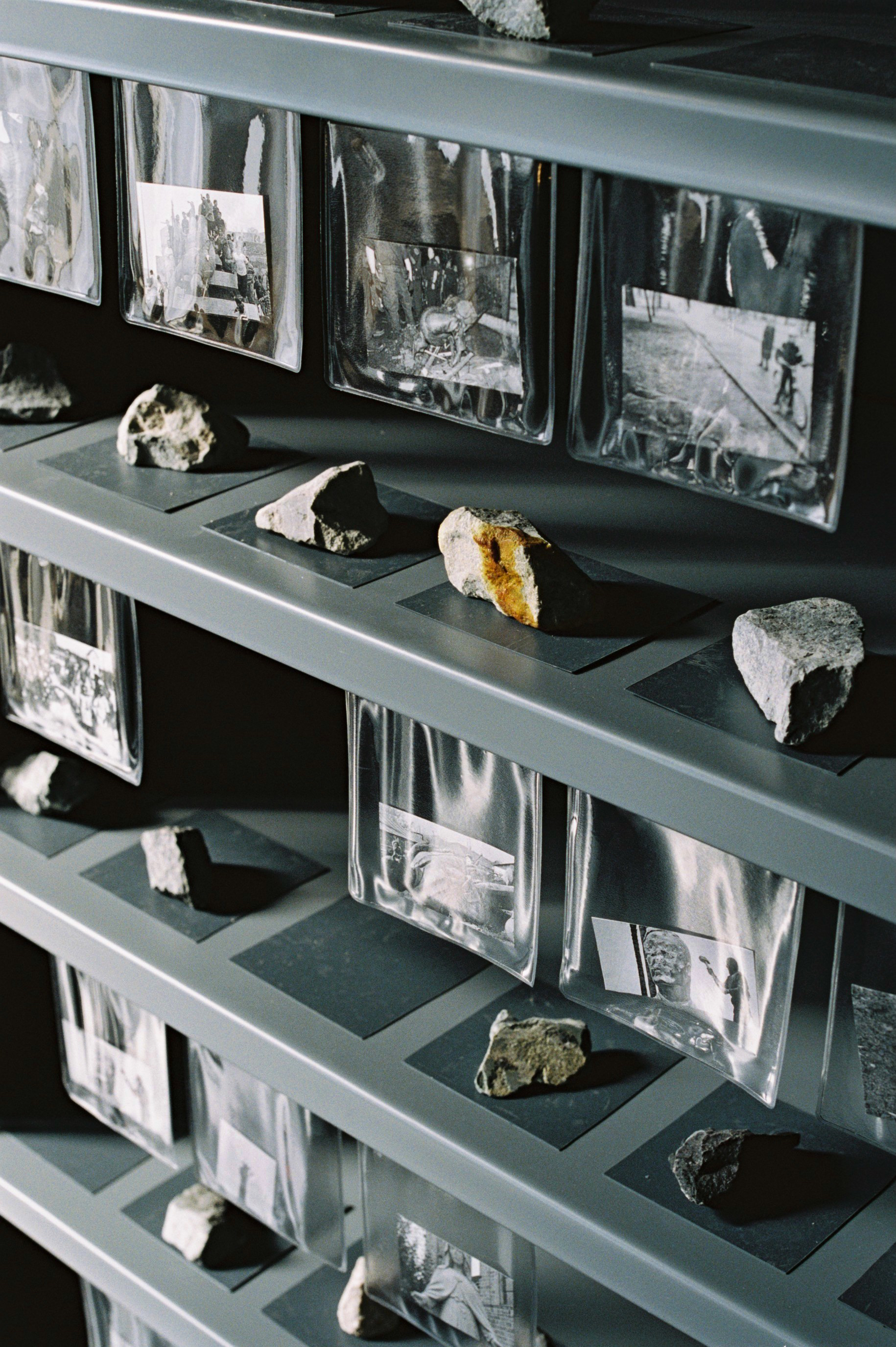If
iconoclasm depended on a gesture, it would be the extinguishing of an
impossible light.
If it depended on an image, it would be a stone thrown at its very centre: ‘masked, taciturn and proscribed’, as Roger Caillois said.
If it depended on someone, it would be the hand that recognises and lies, shelters and destroys, snatches away and offers, reveals and hides.
There is an archive in which an infinite number of small stones, practically indistinguishable shards, are deposited. Their telluric origin reduces them to an extensive grisaille. They rest in neatly separated rows. On metal shelves that resonate with the slightest shake, in a tinkling whispered by a choir that resists lethargy. Their arrangement does not follow an index: each stone has its corresponding image, hanging over it. The image, a plastic-covered photograph, reveals the origin of each rocky fragment.
The swarm of snapshots includes images of statues torn down amid exultant joy (no one celebrates a death like that unless it is the death of a vanquished enemy); there are dismembered and abandoned monuments, bodiless heads and headless bodies. Scattered pieces of limestone and diorite. Concrete, marbles and granites. There are other types of images, too: photos of raised hands holding stones. Each stone fits the palm of the hand, examines it and merges in its destiny. It is the moment before being thrown at that statue which has not yet succumbed. Never has there been such confidence and ingenuity in a single gesture.
The stone hits the statue and produces a shard: another fragment. An accomplice in the end of one image and the birth of another. You could say that the two stones are one, though in different times, run through by a blow.
A stone that is seed and fruit (or the botany of revolution).
If it depended on an image, it would be a stone thrown at its very centre: ‘masked, taciturn and proscribed’, as Roger Caillois said.
If it depended on someone, it would be the hand that recognises and lies, shelters and destroys, snatches away and offers, reveals and hides.
There is an archive in which an infinite number of small stones, practically indistinguishable shards, are deposited. Their telluric origin reduces them to an extensive grisaille. They rest in neatly separated rows. On metal shelves that resonate with the slightest shake, in a tinkling whispered by a choir that resists lethargy. Their arrangement does not follow an index: each stone has its corresponding image, hanging over it. The image, a plastic-covered photograph, reveals the origin of each rocky fragment.
The swarm of snapshots includes images of statues torn down amid exultant joy (no one celebrates a death like that unless it is the death of a vanquished enemy); there are dismembered and abandoned monuments, bodiless heads and headless bodies. Scattered pieces of limestone and diorite. Concrete, marbles and granites. There are other types of images, too: photos of raised hands holding stones. Each stone fits the palm of the hand, examines it and merges in its destiny. It is the moment before being thrown at that statue which has not yet succumbed. Never has there been such confidence and ingenuity in a single gesture.
The stone hits the statue and produces a shard: another fragment. An accomplice in the end of one image and the birth of another. You could say that the two stones are one, though in different times, run through by a blow.
A stone that is seed and fruit (or the botany of revolution).
